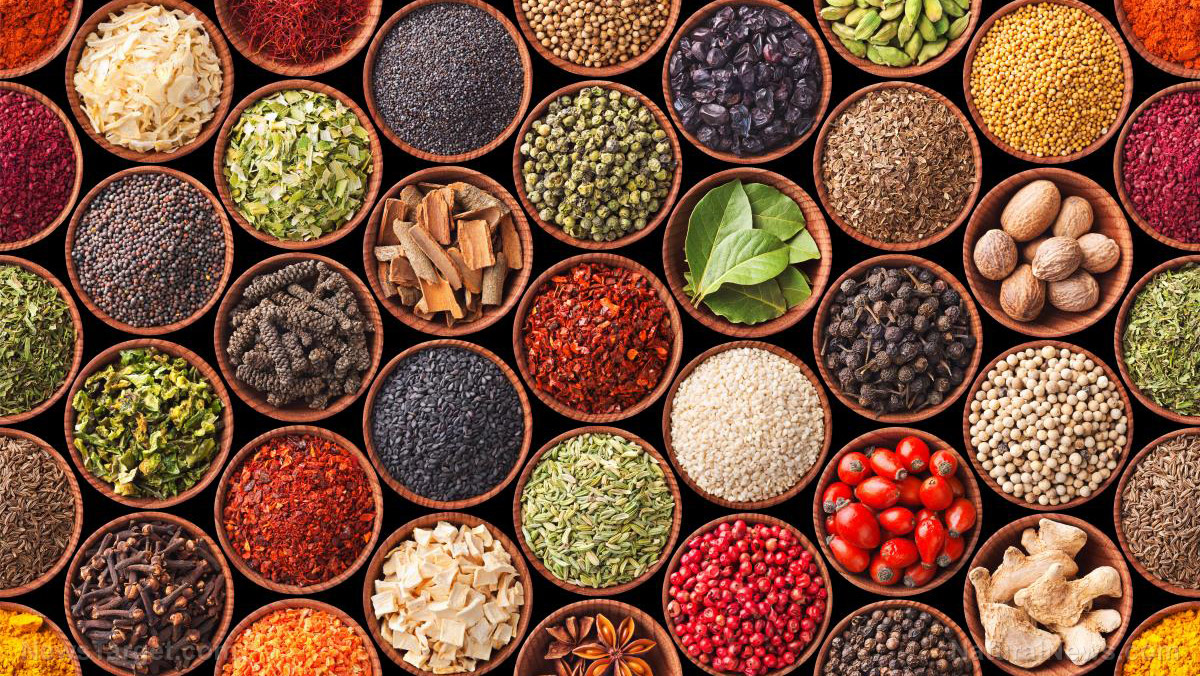Taking a closer look at how the Ayurvedic diet prevents cancer
01/26/2019 / By Zoey Sky

Ayurvedic seasonal eating involves food consumption that is both physically and energetically aligned with a particular time of year. However, as seasons change, most people adopt the Standard American Diet (SAD) instead, which is often linked to increased rates of conditions like cancer, diabetes, heart disease, and neurological disorders. To address this alarming concern, experts are advocating an eating plan called the Ayurvedic diet, which can help lower cancer risk.
The basics of Ayurveda
Ayurveda, a traditional Hindu system based on preventative health, is concerned with harmonizing all aspects of a person’s mind, body, and spirit. Ayurveda aims to balance the physical body, which is made up of five natural elements: fire, water, air, earth, and ether (space).
These elements express themselves as doshas, or primary elements and energies that exist in the body. The three doshas are the Vata, Pitta, and Kapha doshas. Practitioners of Ayurveda believe that each person will express the doshas in their own unique way. The dosha also correspond to specific functions in the body.
- Pitta Dosha – This dosha is linked to water and fire, along with metabolism (e.g. cellular metabolism).
- Kapha Dosha – This dosha is ruled by water and earth. It is also responsible for the health of the spinal and cerebral fluid, the growth of new tissue, and the mucosal lining of your stomach.
- Vata Dosha – This dosha is connected with the air and ether. It is responsible for all movement within the body, such as nerve impulses, respiration, elimination, and circulation.
Replacing the SAD diet with the Ayurvedic diet
If your doshas are unbalanced, you can develop diseases. On the other hand, balancing these can boost your health. Ayurvedic Ritucharya is a systematic method that balances the doshas through eating habits.

These eating habits are designed to help you become aligned with the rhythms of nature, which are also your own natural rhythms. In Ritucharya, each season coincides with to the Dakshinayana, or the gradual movement of the earth around the sun. Meanwhile, seasonal changes are related to particular tastes and changes in the doshas.
To illustrate, the summer months are associated with an “accumulation” and an “aggravation” of Pitta. This can cause common summertime aggravations like fevers, inflammation, and skin rashes. Ayurvedic Ritucharya recommends the consumption of Pitta-calming foods during the hot summer months, like fruits and vegetables, ghee (considered “tridoshic” in Ayurveda), sweet foods, and astringent and bitter tastes (e.g., lemon and coconut water).
However, even the birthplace of Ayurveda isn’t immune to the negative side effects of the SAD diet. In 2011, a report published in AYU, the international quarterly journal for research in Ayurveda, revealed that the World Health Organization (WHO) has identified India as a country at risk of having “most of the lifestyle disorders in the near future.”
To improve unhealthy eating habits, you can follow Ayurvedic Ritucharya or consume more organic and in-season produce.
Below are four reasons why eating fresh and organic produce from your region is good for your overall well-being.
- Buying food that is in season helps you connect with your community. Going to a local farmer’s market to buy in-season cheeses, fruits, meats, and vegetables supports better eating habits, local agriculture, and the environment.
- Eating in-season produce supports healing. Consider apples, which grow in the fall in many regions of the United States. Apples can help the body cool down before winter. Meanwhile, leafy greens that grow spring are alkalizing and detoxing. Lastly, cucumbers and melons that often grow in summer help you stay cool. According to a 2003 study by the University of California, Davis, organic foods are “better overall for cancer-prevention.”
- In season, organic produce only travels a short distance to get to you. When you buy local, organic produce, you are supporting sustainable food production.
- Organic and in-season food tastes better. Unlike GMO-laden foods that are linked to various health risks, organic produce has a fresher taste.
- Organic, regional, and in-season vegetables are more nutritious. The international Quality Low Impact Food Report, one of the largest studies to compare commercial produce versus locally-grown organic produce, revealed that organic produce has about 40 percent more antioxidants and significantly higher levels of essential minerals. (Related: Want to start an Ayurvedic diet? Here are some tips on how to begin.)
The only downside of buying local organic produce is its shorter shelf-life. However, this is a small price to pay since you are consuming nutritious food that is also free from pesticides and GMOs.
If you want to lower your cancer risk, try following the Ayurvedic diet and consume more in season, organic produce.
You can read more articles about the Ayurvedic diet and other beneficial diets that can help prevent cancer at Cancer.news.
Sources include:
Submit a correction >>
Tagged Under:
Ayurveda, Ayurvedic diet, cancer risk, cancer risk factors, cancer risk reduction, eating habits, men's health, natural cures, obesity, proper diet, proper nutrition, S. A. D., seasonal eating habits, standard American diet, weight loss, wellness, western diet, women's health
This article may contain statements that reflect the opinion of the author




















